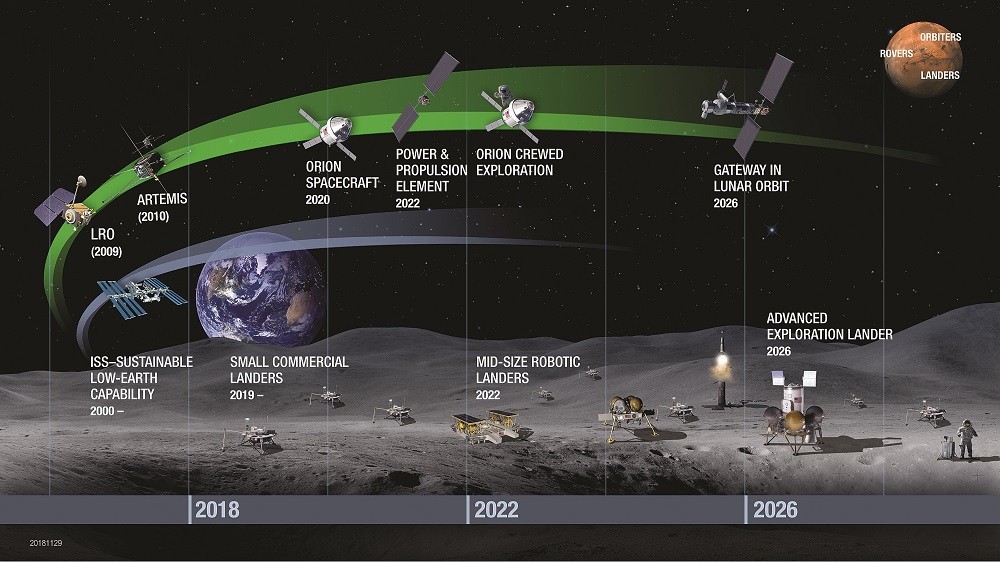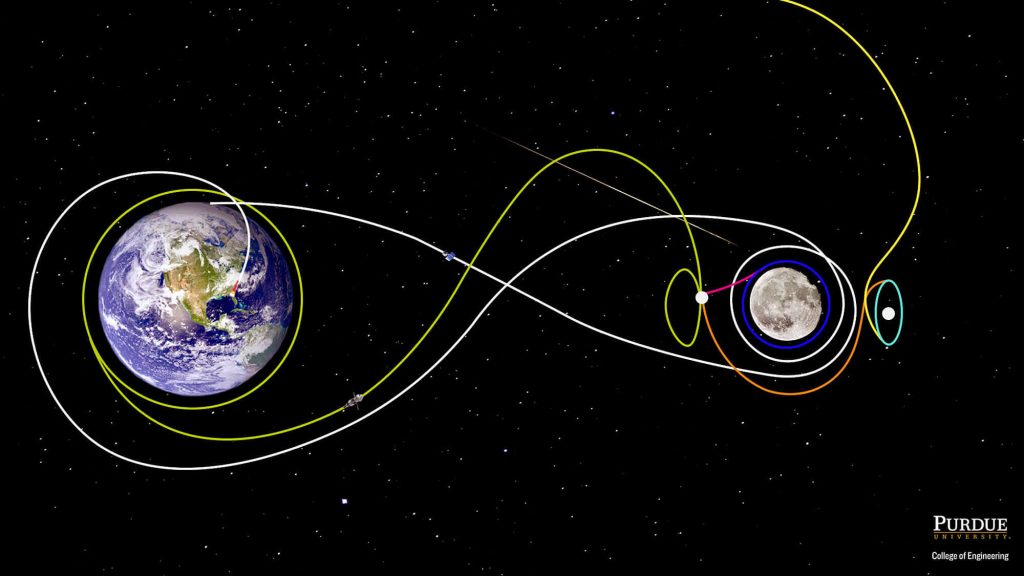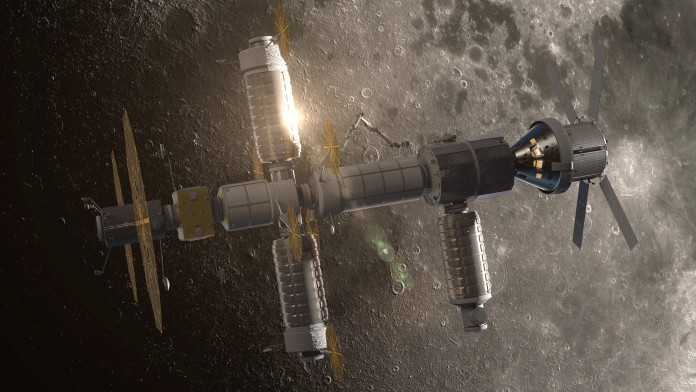On July 20, 1969, the United States accomplished one of the most profound missions in human history by landing humans on the surface of the moon. This achievement impassioned generations of scientists, engineers, pilots, artists, and adventurers to gaze into the cosmos to seek their futures. While the Apollo missions were a success, years of spacecraft design, failure, and systems proving took place in order for Neil to place his boot upon lunar dust. In order to support NASA’s goal of landing astronauts on the Martian surface, systems and operations must be rigorously tested in order to ensure their efficiency in the deep space environment. In today’s Cosmic Mariner, we’re taking a brief look into the operational steps and technology that take us to the moon and back.
Traveling to cislunar space, or the region spanning the Earth and moon, and sustaining a healthy presence is an important step toward a crewed mission to Mars. Integral systems, such as potable water generation and propulsion are critical for the survival of astronauts and need to function at a high degree of efficiency for long duration missions. Should any systems fail, astronauts are only days away from safety as opposed to months. In addition to technology proving, the implementation of a cislunar gateway, a small station orbiting the moon, will not only allow important biological studies to take place, but also serve as preparation for the next generation of deep space astronauts on the conditions of habitation and solidify the technology needed to travel to Mars and beyond.

Currently, the idea is to transport the gateway using the SLS Block 2, producing nearly 11.9 million pounds of thrust. This enormous rocket will launch the habitat into Low Earth Orbit at which point the transfer stage will separate from the core and propel the habitat to a higher altitude for Trans-Lunar Injection. This trajectory creates an eccentric orbit that nears the moon at the apogee, allowing the habitat to slip into lunar orbit during the Lunar Orbital Insertion without the need for immense quantities of fuel. The station will then perform Orbital Maintenance burns to park in a highly elliptical halo orbit allowing it to perigee near the lunar surface. Once in orbit, the crewed Orion capsule will launch from Earth atop an SLS Block 1B, producing 8.8 million pounds of thrust, until it reaches LEO.
The Orion capsule will then separate from the core stage and ride on the power of the propulsion stage until it separates and follows a similar trajectory to that of the gateway. The Orion will rendezvous and dock with the habitat for the duration of the mission. Once the mission is concluded, the command module will ride the service module into a Trans-Earth Injection and travel back to the Earth where it will separate before deorbiting and splashing into the ocean with parachutes.

If this all sounds complicated and mathematically perfect, that’s because it is. Space exploration is full of physics calculations, precise computing and throttle manipulation, and a hearty spoonful of luck. But the Concept of Operations for this theoretical station is only just the beginning. The habitat must have advanced technology aboard in order for the crew to survive and carry out missions. For example, Oxygen generation through electrolysis requires water, thus, the best option for providing it is to employ minimal water storage for reduced weight in conjunction with a water recycling system, that reclaims water vapor from the air and filters waste from spacefarers that is then condensated back into a liquid state. Filtration will capture urine and pass it through a distillation process to remove unwanted materials. Because of the microgravity environment, the process is performed in a small centrifuge to aid in contaminant separation. The purified water will then join the water system to be used for various applications. Without this system, the habitat would require a minimum of 40,000 pounds of stored water per year for a crew of four astronauts. And this is just water!
The cislunar gateway will serve as an important immediate stepping stone for future missions to Mars through the habitat’s rigorous systems testing, psychological and physiological studies, biological experiments, and deep space mission training. Astronauts visiting the station will gain important insights into the intricacies of operating equipment and living within the deep space environment while bolstering future missions to the lunar and Martian surface. Once in orbit, the habitat will host rotational crews of four, building on decades of historic and scientific missions from Apollo to the Shuttle Program and beyond. While we only briefly discussed the operational prowess NASA and the ESA must undertake to reach the moon, in addition to the numerous technologies needed to survive, it’s clear that the engineers, physicists, and other personnel at NASA are capable of breathtaking works of cosmic artistry.






